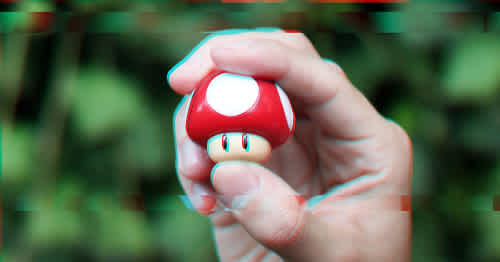It’s Monday afternoon and for one reason or another , your brain isn’t working at its usual pace (no judgement). You’ve been agonizing over a piece of code all morning until, at your wit’s end, you turn to a colleague and offer to buy them coffee if they help you solve the problem. Your colleague has two options: say yes, get free coffee and forever be in your debt or say no, get no free coffee and come across as pretty unfriendly. The answer is obvious to all of us, but fostering a work environment that champions a culture of cooperation isn’t as easy as it looks. In this article we look at how understanding the subtle distinction between cooperation and collaboration can have a long-lasting, positive impact on the shared vision of your team.
Is there a difference between collaboration and cooperation?
In short, yes. Cooperation and collaboration are two words that are used interchangeably in the workplace - but understanding the difference between the two will help managers get the best from their teams and build a happy, healthy atmosphere within your organisation.
The difference lies in how you reach your shared goals. Understanding this will allow your team to work more effectively to achieve their desired outcome in an efficient and conclusive way.
What is collaboration?
To collaborate is to bring together a multi-skilled team who are working together on a project to achieve a shared objective. A collaboration looks like a team of developers working on an app while a designer creates an on-brand interface while a marketing team prepares a badass social media campaign.
When we collaborate we work together towards a shared goal, and this spans across entire teams, departments, companies, countries - maybe even continents.
What is cooperation?
Cooperation is when one person or a group of people work together to support a singular goal. This could manifest in something as minor as a developer explaining a specific aspect of an app to somebody who’s struggling to understand, or one colleague helping another put together a presentation, or one co-worker helping another crack some code in exchange for coffee. With cooperation, the end result benefits both parties and the company as a whole - the project gets finished, the presentation looks fantastic, someone gets free coffee and a culture of generosity and kindness is introduced.
Examples of collaboration vs cooperation
A team that understands the equal importance of collaboration and cooperation are likely to be working together efficiently and proactively. Nurturing a company culture that champions this ethos of teamwork will not only make your employees work together more effectively, but will make the end result more creative and versatile. This makes sense, when you think about it, because bringing together all those clever brains in your company, from developers to creatives to strategists, will give your projects dynamic results that are (way) better than your competitors.
Here are some examples of how you can put this into action:
Collaboration
Your company’s launching a new product. As a developer, you know it’s important to ask the engineers exactly what they need for you to deliver the final code. The engineers are fully aware the product won’t be complete until the developer has finalised this code, so, because both the developers and engineers have their heads screwed on, they collaborate to achieve the end goal. This, ideally, will be creating a product so ground-breaking Mark Zuckerberg will be on the phone begging to know your secrets.
Cooperation
Cooperation is a little different, because you’re working to help an individual case, but the end result will be beneficial for everyone involved. Here’s an example: you’ve been working hard on a presentation and want to practise before you step on stage in front of the team. You ask a coworker to watch you present and give you constructive feedback. This may take up some of their time, but the end result benefits both of you. The presentation will improve, your colleague will feel valued, you’ll owe your colleague a similar favour and you’ll be manifesting a culture of generosity. By cooperating with each other to accomplish singular goals, everyone experiences a positive outcome, including the company. Win!
Tips on how to foster a cooperative and collaborative working environment
Creating an office culture where people’s natural instinct is to help and support each other will be beneficial both to the individual employees and the company as a whole. It fosters a culture of generosity, it reduces egoism and makes for a more cohesive team. However, it doesn’t happen naturally - whether it does or not is up to you. So here are a few ways you can cultivate a cooperative and collaborative work environment:
1. Offer to help
Is your co-worker huffing and puffing next to you? Are they wringing their hands and pulling out their hair? If so, now’s a good time to ask if they need help with something. You could talk through the problem and give a fresh perspective on how to tackle it. Not only will your colleague be smiling a little brighter, but they’ll owe you one - so next time you’re pulling out your hair you can cash in on your indebted colleague.
2. Ask for help
Here’s a nugget of information that might just blow your mind: people like to feel valued. When you have a problem, asking a colleague for help is another way of saying you trust their skillset and value their opinion. So next time you have a problem, don’t hesitate to ask a coworker for a little guidance - they’ll probably take it as a compliment (unless they’re really busy… so just make sure you don’t ask a really busy person).
3. Align your goals
When your company or team is about to begin work on a new product, bring everybody involved together to collaborate on defining your shared vision. Implementing a culture of democracy is not only motivating, but means the entire team will be aligned on the process. This way everybody gets the chance to introduce themselves, the team and their roles - so people know who to go to when they need support.
Here are ways you can align central initiatives and goals:
Create a shared calendar so everybody knows what’s happening on which dates. i.e. deadlines, updates, tests and launches
Have a monthly or weekly team update to discuss progress
Organise product feedback sessions to cultivate your culture of cooperation and collaboration. Just make sure your team is well-versed in giving constructive and empathetic feedback.
4. Share information
Do you have information that the rest of the team might find handy? Sharing is caring. If a development has happened throughout the day that could benefit and align your team, make sure you communicate it. Strong communication skills from the top will trickle down to the rest of your team, leading to a culture of sharing and openness - nothing could be more beneficial to a hard-working team.
5. Give other teams and project stakeholders regular updates
You’re working on a badass piece of software the likes of which have never been seen. Would the design team be interested in seeing your work? The likelihood is yes. Aligning your plans with the rest of the project stakeholders is likely to inspire their work and streamline your vision.
When each department works in isolation, deadlines tend to misalign, designs are binned, time is wasted and the build takes longer to complete.
So make sure you share your deadlines and updates with the rest of the team - that way everyone will be on the same page, there’ll be way fewer miscommunications and way more high-fives.
Conclusion
At first glance it might not seem like there’s a big difference, but understanding the distinction between collaboration and cooperation will help foster a productive, efficient and cohesive working environment. Together you can agree on a collaborative process that benefits each department and will help you operate at higher levels of creativity.
If you implement this mindset into your working environment each and every one of your team will reap the benefits - from data, to designers, to programmers, to developers. But don’t take my word for it - try it for yourself! Who knows, you might get a free coffee out of it.


